Trip Details

21 Day Shangri-La & the Heart of Kham Tibetan
Date: 16th Sept. 2025, 2026
Price: Upon Request!
Trip Focus: Culture + Shangri-la
Status: Open to Booking
Route: Chengdu-Labahe-Xinduqiao-Daofu-Yuke-Ganzi-Dege-Baiyu-Xinlong-Litang–Daocheng-Yading-Xiangcheng-Deqing-Shangri-La-Lijiang.
Trip Code: C006
Overview

How can we make this trip special?
Best Guide: Philip (Expert guide on Tibetan culture and Buddhism)
Born and raised in the eastern Tibetan region of Kham, Philip is the ideal guide for those who want to explore Tibet. Through his 20 years of working in the travel industry, Philip has become well versed obtained good knowledge about Tibetan culture, Buddhism, birds and photography from his extensive reading, deep thinking and frequent practicing because of his work as a guide. Philip has a deep love toward this piece of land we are going to visit, and he will unveil the beauty of Shangri-La in different ways.

Small Group:
We ensure that our groups will never exceed a size larger than six people. This is to make sure you can enjoy an intimate, to ensure your full enjoyment of the trip.
Best Hotels:
We will do our utmost to choose a wild range of best local hotels including some nice Tibetan family hotel to give you a unique experience.
Best Sites
All the sites we are going to visit are carefully chosen by Philip and even some exclusive sites will be included in the itinerary to give you an ultimate experience.
Comfortable pace.
We will have a pace of giving us time fully immersing ourselves into Tibetan Plateau and enjoying local scenery, culture and people.
Multiple activities.
Different activities including lectures on local culture, birding, flower watching, interacting with local people and monastery visits will be planned to ensure we get the best experiences in each place.
Map
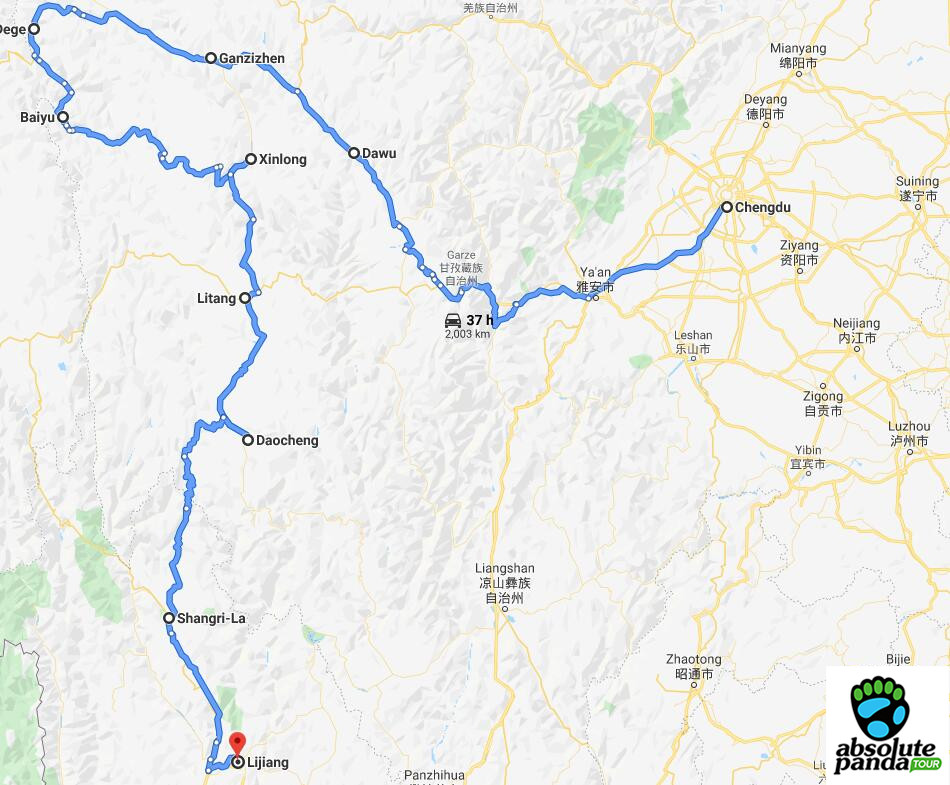
Grand Shangri-la Map
Itinerary
Day 1 Arrive Chengdu.
Day 2 Chengdu – Labahe Nature Reserve.
Day 3 Labahe - Xinduqiao
Day 4. Xinduqiao – Daofu.
Day 5. Daofu – Yuke Grasslands.
Day 6. Yuke – Ganzi.
Day 7. Ganzi – Dege.
Day 8. Dege - Baiyu
Day 9. Baiyu
Day 10. Baiyu – Xinlong.
Day 11. Xinlong – Litang – Daocheng.
Day 12. Daocheng – Yading.
Day 13 Yading Nature Reserve.
Day 14. Yading – Xiangcheng.
Day 15 Xiangcheng to Deqing.
Day 16 Deqing.
Day 17 Deqing – Shangri-La.
Day 18. Shangri-La.
Day 19 Shangri-La – Lijiang.
Day 20 Lijiang.
Day 21 Depart from Lijiang
Day 1 Arrive Chengdu. Meals: D
After a pickup from the Shuangliu International Airport in Chengdu, your group will have the opportunity to rest in preparation for the next day. You’ll have time to explore if you’d like.
Hotel: Hongtai
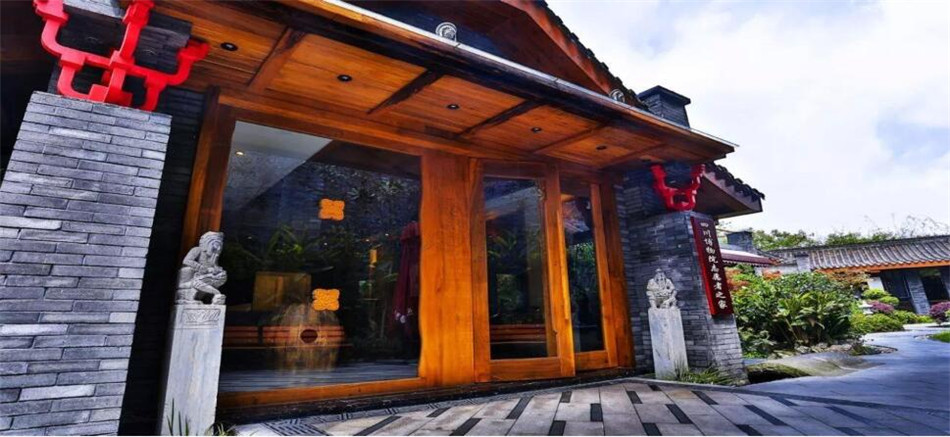
Day 2 Chengdu – Labaha Nature Reserve. Meals: BLD
In the morning, we will board our transport to visit the Chengdu research base of giant panda breeding. Since we are visiting in the middle of August, many of the pandas will be sleeping in the middle of the day, however this is the best time to see the newborn pandas. A guided walk through the base will give you a better understanding of the behaviors of these animals.
After visiting the panda base, we will have a lunch at a popular local restaurant before we continue to Labahe Nature Reserve where we will search for water deer, red panda and Lady Amherst’s pheasant.
Overnight: Labahe Grand Hotel
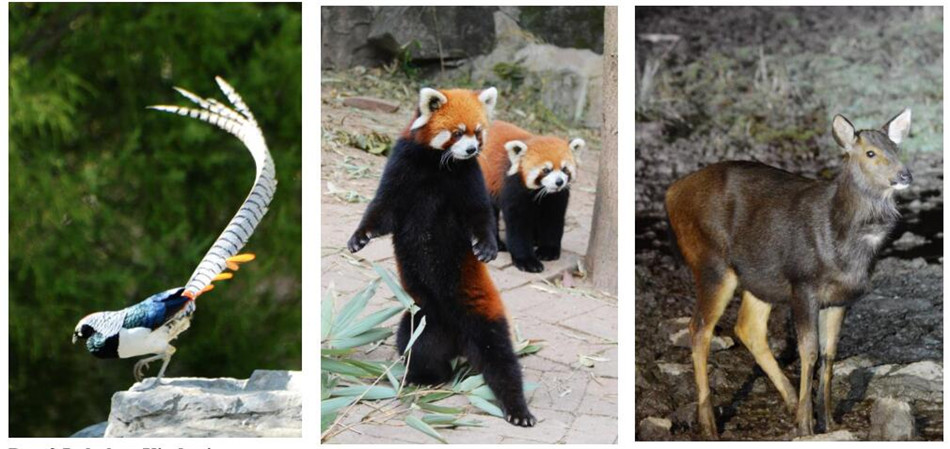
Day 3 Labahe - Xinduqiao Meals: BLD
In the morning, we spend the whole morning to search for red panda and water deer. In the afternoon, we drive to the nearby Tibetan village of Xinduqiao. This area is known as a photography paradise because of its green grassland plateaus, streams, mountains, and captivating local Tibetan culture.
Overnight: Xinduqiao Tibetan Boutique Hotel.

Day 4. Xinduqiao – Daofu. Meals: BLD
After photographing Xinduqiao, we will drive toward our destination, Daofu. This is an agricultural region which is well known for its beautiful Tibetan houses. Here you will see houses built on mountains surrounded by green woods, with winding river flowing by the front and awe-inspiring snow-capped mountains standing as background. The interior of the houses consists of spacious and bright rooms providing a comfortable living environment. Representing a folk art museum, exquisite and classic Tibetan paintings are adorned on the doors, girders, pillars, and walls. We will stay in a local Tibetan family hotel.
Overnight: Daofu Tibetan Family Hotel.
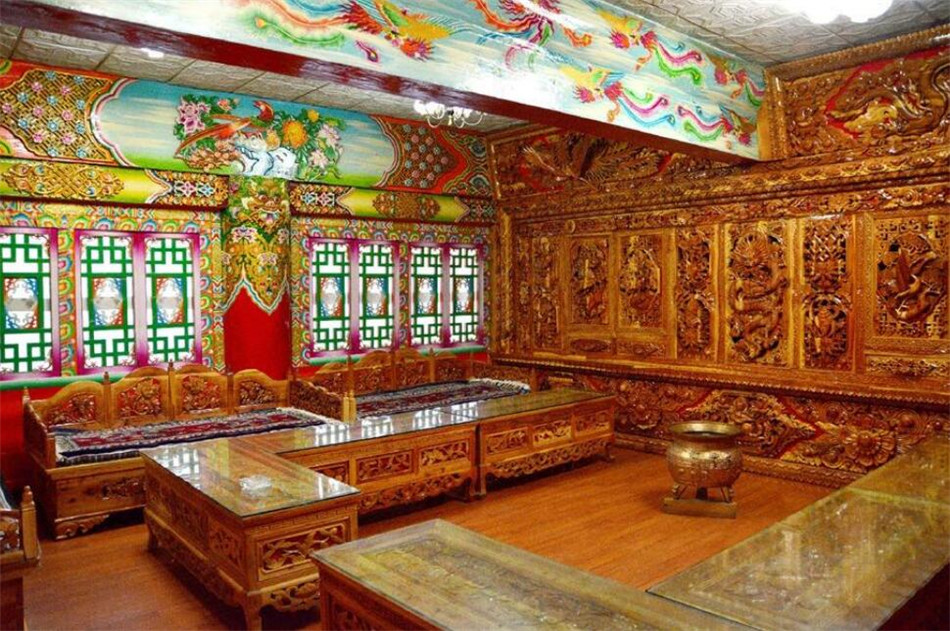
Day 5. Daofu – Yuke Grasslands. Meals: BLD
Today we will spend the whole day exploring the scenic Yuke grasslands including visits to local villages and monastery in Daofu, sampling Tibetan cuisine with a local family. Known as a garden on the Tibetan plateau, the picturesque Yuke grassland is populated with misty forests, lakes, creeks, blue sky, clouds and snow-capped mountain peaks in distance. Here you can spot local nomads herding yaks, women dressed in their cultural attire and the unique architecture style of the local Tibetan homes and monasteries. If you are lucky, we can see people setting up tents on the grassland, dancing and singing in local celebrations and even horse racings organized by the nearby villages.
Overnight: Daofu Family Hotel
Day 6. Yuke – Ganzi. Meals: BLD
In the morning we will drive on to Ganzi along the picturesque Sichuan Tibet road. We will continue to photograph more villages as we witness the change in architecture style. As we drive to Ganzi, we will stop in the Tibetan county of Luhuo, a place famous for its Tangka paintings. After lunch at Luhuo, we will drive on toward Ganzi. While driving, we will stop near a famous alpine Lake called Kasha Lake. Now the birds that breed during the summer here are preparing to start their long migration to warmer places for winter.
Overnight: Ganzi Tianhe Tibetan Boutique Hotel
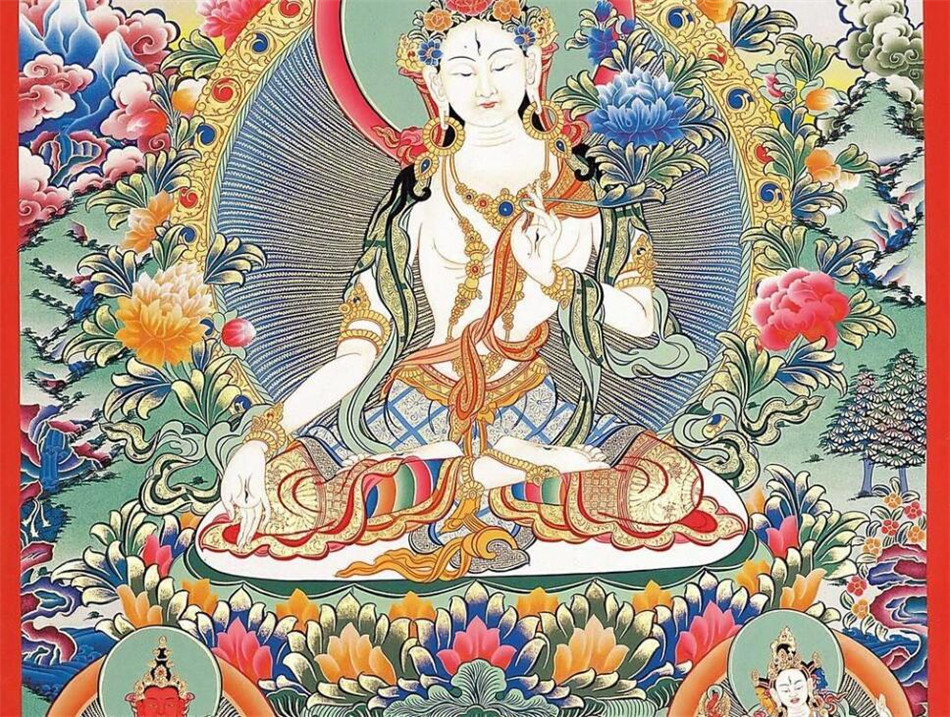
Day 7. Ganzi – Dege. Meals: BLD
On our way from Ganzi to Dege, we will enjoy a change in scenery. Known for its role as an important agriculture area in this region, the landscape is dotted with farmlands with snow-caped mountains in distance. We will have multiple stops that will provide excellent photography opportunities. Our final destination will be the Tibetan community of Dege. This village is heralded as the birthplace of king Gesar, one of the most influential figures in Tibetan history. The story of king Gesar’s life has been recorded as the world’s longest ballad. In addition, Dege is also known as the birthplace of southern style Tibetan medicine and Khampa Tibetan opera. Dege Dialect is regarded as the standard Khampa dialect.
Overnight Dege Queershan Hotel


Day 8. Dege - Baiyu Meals: BLD
In the morning, we will have our praying walks around the Dege Printing House, which is the oldest and biggest Tibetan Printing house in whole Tibetan area and still functioning up to now with traditional printing methods. The printings from the Printing House are known as the most authoritative, exquisite and inclusive with basically no printing flaws. Every morning, lots of local people come and walk around the sacred site, we can join them and feel the sincerity of the local people toward Tibetan Buddhism. In the afternoon, we drive on to Baiyu.
Overnight: Baiyu Chaqingsongduo Hoel
Day 9. Baiyu Meals: BLD
This day of the trip, we will spend the whole day exploring Baiyu. As far as the itinerary is concerned, today is our most laid back day. We spend the day rest or exploring the largest monastery in Baiyu, the Baiyu Monastery.
Overnight: Baiyu Chaqingsongduo Hotel

Day 10. Baiyu – Xinlong. Meals: BLD
After waking up we will depart from our accommodation from Baiyu to drive to Xinlong. Along the way we will pay a visit to the Chaqingsongduo white-lipped deer reserve. If we are lucky, we will see them grazing side by side with local yak herds. Covering 1436 square kilometers, the reserve was established in 1995 to protect rare and endangered animals. With over 3000 white-lipped deer, the reserve is very scenic and an important sanctuary for a great variety of wildlife including snow leopards, black-necked crane, black stork, golden eagle, Pallas sea eagle, Chinese monal, blue sheep, Chinese goral, serow, water deer, Tibetan gazelle, musk deer, golden cat and white eared pheasant.
Then we will drive past another sacred site for Tibetans, Yaqing monastery. The young female Buddhists gather here to study Buddhism and turn this monastery into a small town.
Overnight: Xinlong Xinliang Hotel
Day 11. Xinlong – Litang – Daocheng. Meals: BLD
Xinlong is known as the quietest Tibetan county in Ganzi Tibetan autonomous prefecture. Being located far away from the main roads to Tibet, you can expect wide open scenery with few other cars. While we drive on the road along the Yalong River, the scenic gorge will bring us lots of breath-taking scenery and we can enjoy some of the most authentic Tibetan architecture, including a well-reserved Tibetan bridge. After Lunch at Litang, we will pay a visit to the largest monastery in this area known as Changqingchunkeer monastery. In the afternoon, we drive on to Daocheng, en route, we will pay a visit to Bangpu monastery, a monastery built under mountain cliff. Outside the monastery, you can see flocks of White Eared Pheasants lingering around freely. Here they are the masters co-sharing this beautiful land with locals.
Overnight: Daocheng Xueyu Garden Hotel
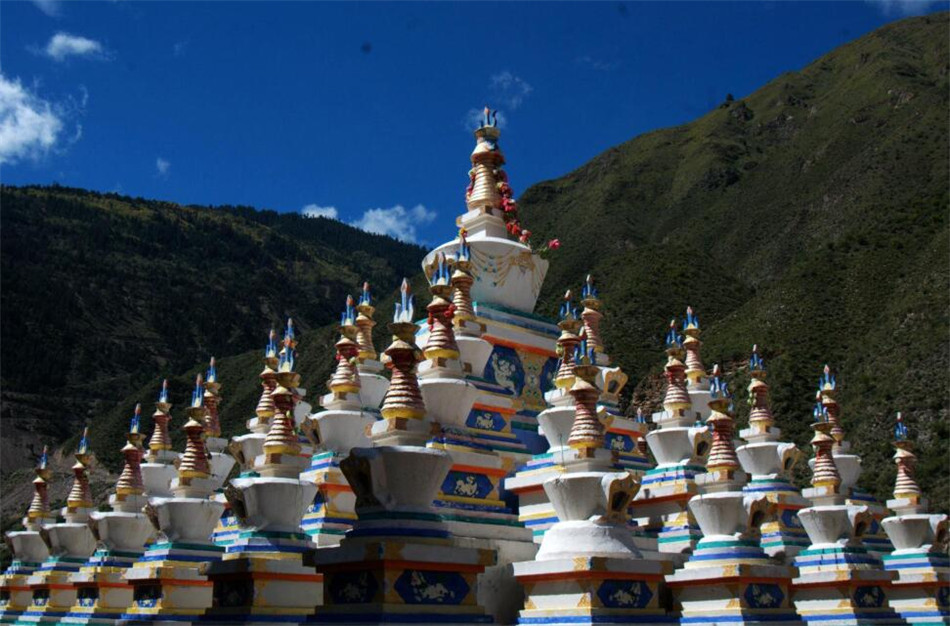
Day 12. Daocheng – Yading. Meals: BLD
Daocheng is known as the last Shangri-La. This was the place where explorer, Joseph Rock was astonished by beauty landscapes and authentic, local culture. In the morning, we will drive toward our destination Shangri-La village, en route, we will make multiple stops to photograph beautiful villages and monasteries. At Shangri-La village, we will take a local shuttle bus to Yading Nature Reserve. Around and stay inside local village. Yading is known as the core of Shangri-La named by James Hilton in his book the Lost Horizon.
Overnight: Yading Tibetan Hotel Hotel
Day 13 Yading Nature Reserve. Meals: BLD
We spend whole day exploring the famous Yading Nature Reserve, observing beautiful snow-capped mountains. This reserve is most famous for its spectacular snow-capped mountains, steep cliffs, crystal clear lakes, vast pastures, as well as the dense forest. In particular, we will seek mount Chenrezig, mount Jambeyang and mount Chanadorje. These peaks are regarded by local Tibetans as their holy mountains because they believe the three mountains are embodiments of three Bodhisattvas: The Bodhisattvas of mercy, wisdom, and power. Local Tibetans believe that the three holy mountains protect them and if one sincerely makes pilgrimages to the three mountains, their wishes will come true.
Overnight Yading Tibetan Hotel in local village

Day 14. Yading – Xiangcheng. Meals: BLD
This day’s itinerary will include a good deal of driving. As an important agriculture county in Ganzi Tibetan autonomous prefecture, Xiangcheng has unique white Tibetan houses and is a necessary overnight-stop on the 'Backdoor'-route to Yunnan. On our way to Xiangcheng, we will come over some mountain passes and see some beautiful villages scattered amongst wheat-field-paddies in the valley ground. The large, cubicle houses resemble little castles and with their white-chalked exterior walls give the whole valley a distinct cultural aesthetic.
Overnight Xiangcheng Dele Hotel
Day 15 Xiangcheng to Deqing. Meals: BLD
In the morning, we will drive on toward our destination Deqing after having breakfast. Today we will drive past Derong, a place famous for its abundant agriculture products and warm weather. After Derong, we will get a chance to see the first bend of Jinsha River, which is one of the most important tributaries of Yangzi River.
Overnight Songzan Meili Hotel
Day 16 Deqing. Meals: BLD
Occupying the northwest corner of Diqing Prefecture, Deqin borders the Tibet Autonomous Region to the northwest and Sichuan to the northeast. Located in the central part of the Hengduan mountains, Deqin contains the valleys of the Salween, Mekong, and Jinsha Rivers lies in the transition between a subtropical highland climate and humid continental climate. Deqin town is the best place to get a clear view of Meili Snow-capped Mountain located on the border to Tibet.
Overnight Songzan Meili Hotel

Day 17 Deqin – Shangri-La. Meals: BLD
On this day of the itinerary, we will drive from Deqin to Shangri-La. On the way we will pay a visit to Baishuitai, known for its beautiful terraced calcified ponds.
Overnight: Hotel near Songzanlin Monastery
Day 18. Shangri-La. Meals: BLD
Today is an easy day. Our hotel is near the base of the largest monastery in Yunnan province, Ganden Sumsanlin Monastery, giving us a chance to visit after our arrival. Built in the 17th century by order of the 5th Dalai Lama, the buildings are in the style of Potala Palace in Lhasa. This sprawling temple complex is home to more than 700 monks and is built on a hill at the southern end of the Zhongdian valley, affording a magnificent view. Officially renamed “Shangri-La” in 2002 by the Chinese government, the valley is a truly idyllic world of Yaks at pasture, fields of fragrant barley, wetlands in bloom, and shaggy ponies hitched outside homes built in the traditional Tibetan style. After a visit to the monastery, we return to the hotel for a sumptuous dinner of local Tibetan cuisine.
Overnight: Sumzanlin Hotel (Tibetan style)
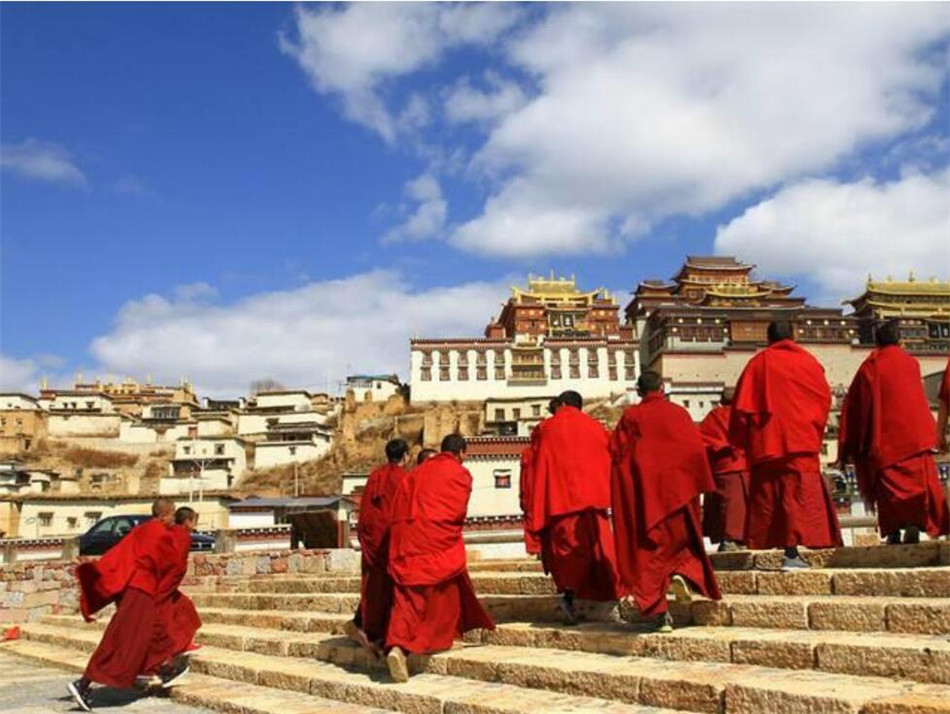
Day 19 Shangri-La – Lijiang. Meals: BLD
Today we will drive from Shangri-La to Lijiang, en route we will pay a visit to a very scenic place named Baishuitai, a place known for gem-like calcified ponds, then we will pay a visit to the famous Tiger Leaping Gorge, one of the world's deepest gorges tucked between Yulong Snow Mountain and the Haba Mountains. We stop to explore the Gorge where the torrent of the Yangtze, displaced from its ancient course, disappears into a narrow defile between two mountain ranges. Legend has it that a tiger once leaped across in flight from a hunter, hence the name. With more than 3048 meters (10,000 feet) of vertical relief between the mountain summits and the river, Tiger Leaping Gorge is one of the most spectacular gorges on earth.
Then we past the multiple peaks of the gorgeous Jade Dragon Snow Mountain Range. Fifteen minutes away from the town lies an airstrip from the World War II days of “Flying the Hump.”
The ancient capital of the Naxi kingdom is Lijiang, situated at an altitude of 7,874 feet on the Northwestern Yunnan Plateau in Southwest China. Historically known as an important center of commerce and culture on the Silk Trading Route the city is now a UNESCO world heritage site dedicated to the preservation of the culture of the indigenous Naxi people. The Naxi are descendants of the Tibetan nomadic tribes and they form a matriarchal society dominated by women, where marriage is not widely practiced. The region has been immortalized as the magical and beautiful Shangri-La in the famous novel by James Hilton. Lijiang’s old town is crisscrossed by quaint cobble stoned lanes connected by small bridges over a series of small rivers.
We arrive at Lijiang in the early afternoon. After freshening up, we explore the Old Town of Lijiang. If energy permits, take a short hike up to the hill close to the park to get a bird view of the whole Lijiang Old Town.
Overnight: Lijiang Tinghuatang Hotel
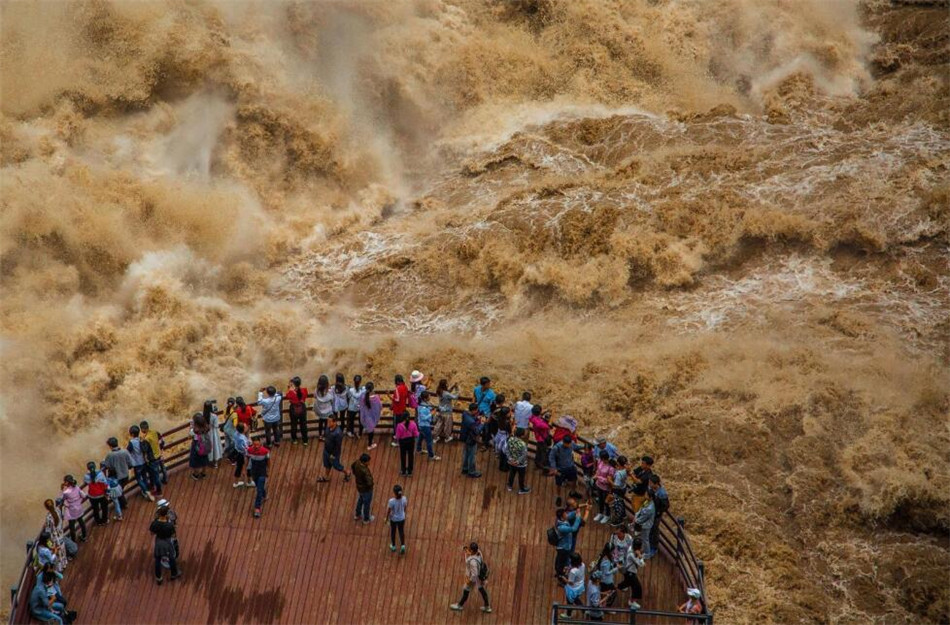
Day 20 Lijiang. Meals: BLD
After breakfast at our hotel, we will walk to Black Dragon Pool Park. Once you past the Waterwheel at the entrance of Lijiang's Old Town, you will find yourself transported into a world of narrow cobblestone streets bordering canals of crystal clear freshly melted snow, unchanged since the Ming Dynasty when the town was founded. The canals are lined with weeping willows and decorative arched bridges linking one alley to the next.
Enter the Black Dragon Pool Park and photograph Jade Dragon Snow Mountain rising majestically behind the peaceful lake.In the afternoon, we can visit Baisha Naxi village, which is a small village 10km north of Lijiang. Although the traditional houses do not look very impressive, Baisha was the historical capital of the Naxi kingdom and is still a good place to have a glance at the Naxi culture. There are old temples with interesting frescoes, traditional musicians, as well as Taoist doctor specialist in herbal medicine.
Overnight: Lijiang Tinghuatang Hotel

Day 21 Depart from Lijiang
Airport see off.
Dates & Prices
Cost of private 21 Day tour
Group size: 2-12
Upon Request
Cost:
Upon Request ;
Single supplement: Upon Request
The cost includes the following items:
1. Local best hotels for the whole trip. (Two person share one twin room.)
2. All meals at local popular restaurants;
3. A private vehicle with service of skilled driver throughout the whole trip;
4. Service of an English-speaking guide throughout the whole trip;
5. Bottled water, snacks and fruits;
6. Admission fee, shuttle bus and cable car transportation for above-mentioned attractions;
7. China domestic travel accident insurance
The cost doesn't include the following.
1.Drinks during the meal.
2.Extra charges due to change of itinerary from client side or factors beyond the control of
3.AbsolutePanda such as natural disaster and governmental policy change.
4.Discretionary tips to the guide and driver.
5.Any personal expense.
6.International Airfare to and out of Chengdu
Accommodations
Chengdu.
Labahe
Xinduqiao
Daofu.
uke Grasslands.
Ganzi.
Dege.
Baiyu
Xinlong.
Daocheng.
Yading.
Xiangcheng.
Deqing.
Shangri-La.
Lijiang.
 info@absolutepanda.com
info@absolutepanda.com






